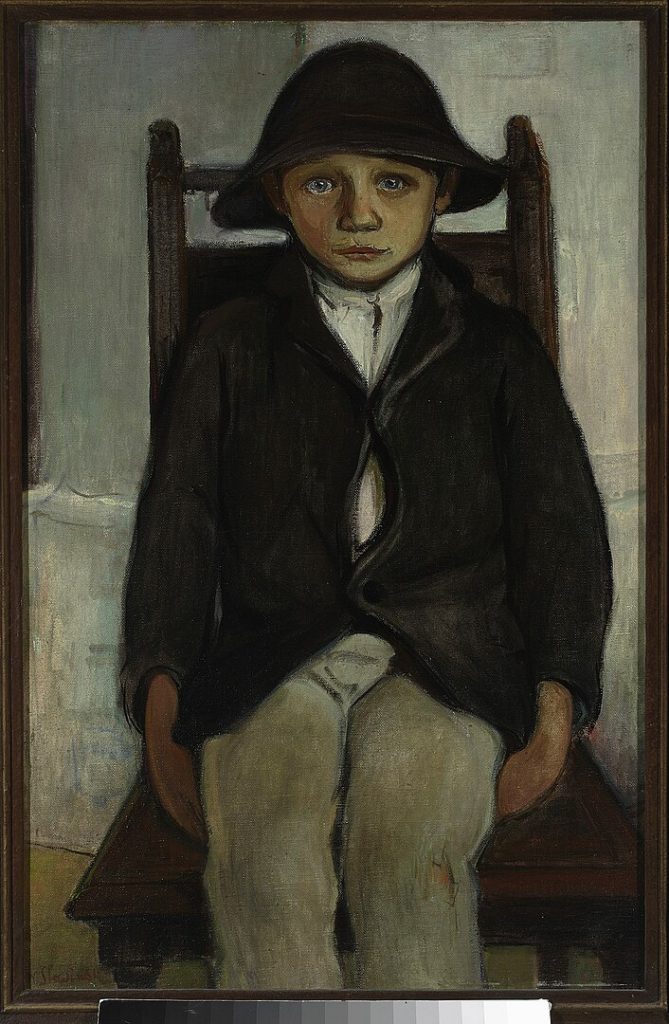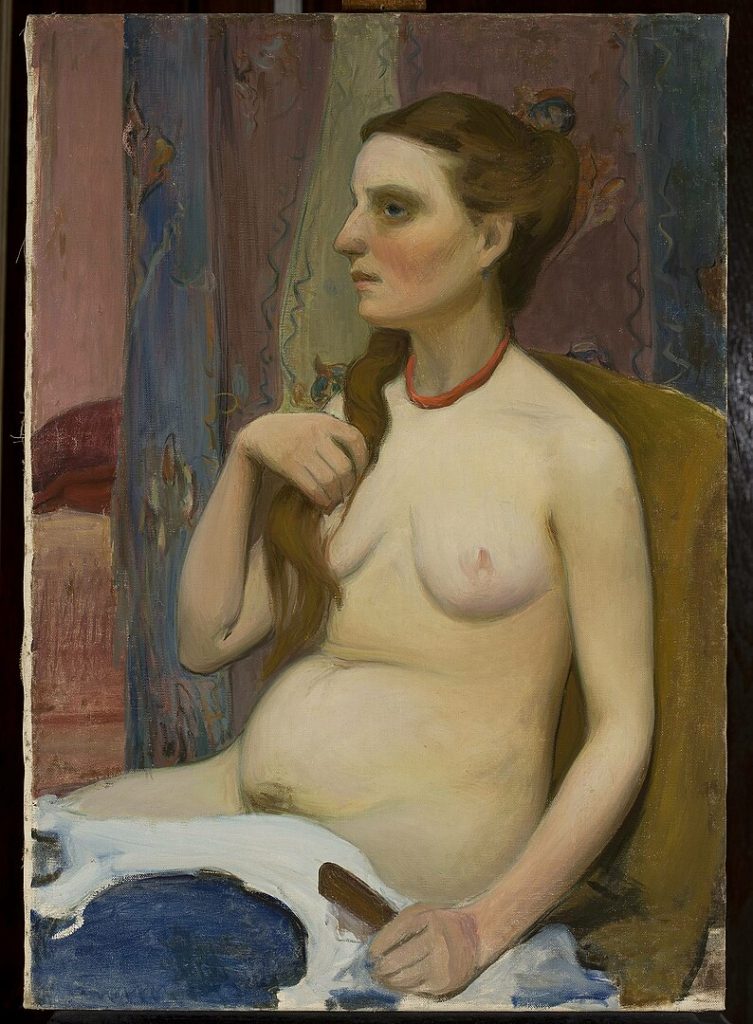
Władysław Ślewiński (1856–1918) was a Polish painter associated with the Symbolist movement. He was born in Kraków, Poland, and later studied at the Kraków Academy of Fine Arts. Ślewiński also spent time in Munich and Paris, where he was influenced by various artistic trends of the late 19th and early 20th centuries.

Ślewiński initially worked in a realist style, but he later transitioned to Symbolism, a movement that sought to express emotions, ideas, and spiritual concepts through symbolic imagery. His art often featured dreamlike and allegorical elements.

One of his notable works is the painting “Melancholy,” which reflects the Symbolist theme of introspection and emotional depth. In this painting, Ślewiński depicted a young woman in a contemplative pose, surrounded by symbolic elements that convey a sense of melancholy and introspection.

Ślewiński’s career was unfortunately cut short by his early death in 1918. Despite his relatively short artistic career, he left a lasting impact on Polish art and is remembered as one of the key figures in the Symbolist movement in Poland. His works can be found in various museums and collections, preserving his contribution to the art world.






